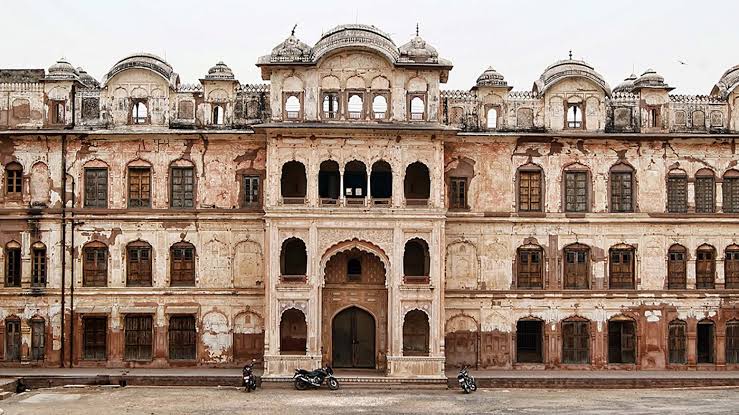
Qila Mubarak
Patiala, India
- Admire the Sheesh Mahal's mirror work.
- Explore the Darbar Hall's architecture.
- Learn about Patiala's royal history.
- Photography of the fort's architecture.
- Walk through the fort's courtyards.
Known for:
Description:
Qila Mubarak, the 'Fortunate Fort', is a magnificent historical monument in the heart of Patiala. This sprawling complex showcases a blend of Mughal and Rajput architectural styles, reflecting the rich cultural heritage of the region. It comprises several palaces, courtyards, and gardens, offering a glimpse into the opulent lifestyle of the Patiala royalty. Key attractions include the Darbar Hall, where royal ceremonies were held, and the Sheesh Mahal (Palace of Mirrors), adorned with intricate mirror work. The fort's imposing gates and fortified walls stand as a testament to its strategic importance. Visitors can explore the various sections of the fort, admire the intricate artwork, and learn about the history of the Patiala state. A must-visit for history buffs and architecture enthusiasts.
History:
Qila Mubarak's construction began in 1764 by Baba Ala Singh, the founder of the Patiala state. Successive rulers added to the complex, resulting in its diverse architectural styles. It served as the royal residence and the center of power for the Patiala state. The fort witnessed significant historical events, including battles and treaties. During the British Raj, the Patiala state maintained its autonomy, and Qila Mubarak remained a symbol of its sovereignty. After India's independence, the fort was preserved as a historical monument, showcasing the legacy of the Patiala rulers. Today, it stands as a reminder of the region's glorious past and attracts tourists from all over the world.